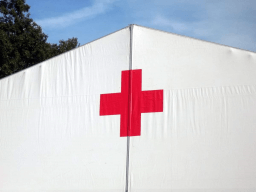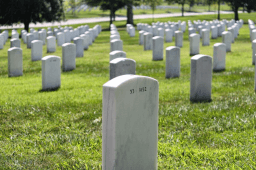Victory in Europe Day
(Also known as V-E Day)
Victory in Europe Day is observed next on Friday, May 8th, 2026 (294 days from today).

Victory in Europe Day is celebrated on May 8th to commemorate when the Allies during World War II officially accepted the unconditional surrender of Germany's armed forces.
Did you know that even after Germany - the architect of the war - surrendered, Japan continued to wage war against the Allied armies? World War II was the most expensive war ever; More than 75 million lives were lost, cities were razed and Europe's economy devastated. The war began when Hitler's Germany invaded Poland and ended nearly six years after the surrender of Japan. Victory in Europe Day is celebrated as a holiday in some European countries and is known as V.E. Day and V-E Day in the UK and US, respectively.
History of Victory in Europe Day
On April 30th, 1945, Allied forces surrounded Germany, tightening the noose around the German army. Realizing his hopeless situation, Hitler killed his newlywed wife, Eva Braun, and then committed suicide in a Berlin bunker. Immediately taking over as president, Grand Admiral Karl Donitz, Hitler's successor, began negotiating a surrender deadline with the Allied forces. Chief among his goals was to save as many Germans as possible from Soviet capture.
On May 4th, at Luneburg Heath, British Field Marshal Bernard Montgomery accepted the unconditional surrender of German forces in the Netherlands, northwest Germany, and Denmark. On May 7th, another unconditional military surrender was signed at SHAEF H.Q. at Reims, between the Supreme Allied Commander, General Eisenhower, and General Alfred Jodl of Germany. The next day, a slightly revised document - Germany's Last Instrument of Surrender - was signed by German Field Marshal William Keitel at Karlshorst, Berlin.
After the announcement of Germany's surrender on the radio on May 7, the news quickly spread throughout the Western world, and jubilation broke out everywhere, especially in North America and the United Kingdom. BBC interrupted their program to announce that Victory Day in Europe would be a national holiday. More than a million people poured into the streets of the UK to celebrate, while in London people gathered in Trafalgar Square, the Shopping Center and Buckingham Palace. The British royal family, joined by Prime Minister Winston Churchill, appeared on the balcony of the palace, waving to the cheering crowd.
In the United States, Victory Day in Europe occurs on the same day as President Harry Truman's 61st birthday. However, he gave the victory to his late predecessor, Franklin D. Roosevelt, and the American flag remained at half-mast. Victory Day in Europe is also celebrated in Australia, Paris and Canada, where a riot broke out and resulted in several deaths.
Some interesting facts about World War II
- It is located between two groups of countries
World War II was fought between the Allies - Great Britain, France, Russia, China and the United States - and the Axis nations - Germany, Italy and Japan.
- The Holocaust happened
Hitler's Germany killed about six million Jews during the war.
- Some countries remain neutral
Spain, Sweden, and Switzerland are examples of countries that never choose a side in war.
- It was the bloodiest war
About 75 million people died in the war, including 40 million civilians and 20 million military personnel.
- Millions of people died because they weren't perfect Germans
In addition to the Jews, Hitler ordered the killing of disabled people and gypsies for failing to meet his vision of the best and strongest race.
Some reasons for Victory in Europe Day being important
- It marked the beginning of the end of the Second World War
When the Germans surrendered to the Allies on Victory in Europe Day, the war ended the war in the European theater, allowing the Allies to focus all their energies on winning the Eastern Theater for three months.
- It serves as a day of remembrance
Victory in Europe Day is not only a day to celebrate the surrender of Germany, but also a day to pay tribute to the soldiers who fought and died to make it happen.
- It was a day of reflection
Victory in Europe Day is a day for every World War II participant, both instigators and heroes, to reflect on the actions and events that led to the outbreak of war and to ensure they are not repeated you again.
How to celebrate Victory in Europe Day
- Visit the World War II Memorial
The World War II Memorial was built in 2004 to honor those who fought and died in World War II. The memorial is located in Washington D.C. You can visit and tour this honorable site to pay respects to those who prevented war from entering our borders.
- Talk to a World War II Veteran
You can observe Victory Day in Europe by chatting with a World War II veteran about the unfiltered facts of the war. There are many of these veterans around, and they can be found at upscale homes. Visiting them will allow you to learn a lot and give you the opportunity to appreciate their sacrifices.
- Watch documentaries or movies about World War II
Many films are produced almost every decade, dedicated to the major battles of the Second World War. You can spend Victory Day in Europe watching classics like “Stalingrad”, “Dunkirk”, “Dirty Dozen”, “Come and See” and “Saving Private Ryan”. You can also watch documentaries, such as “Battlefield”, “World at Watt” and “Russia’s War: Blood upon the Snow”.
Observed
Victory in Europe Day has been observed annually on May 8th.Dates
Wednesday, May 8th, 2024
Thursday, May 8th, 2025
Friday, May 8th, 2026
Saturday, May 8th, 2027
Monday, May 8th, 2028


